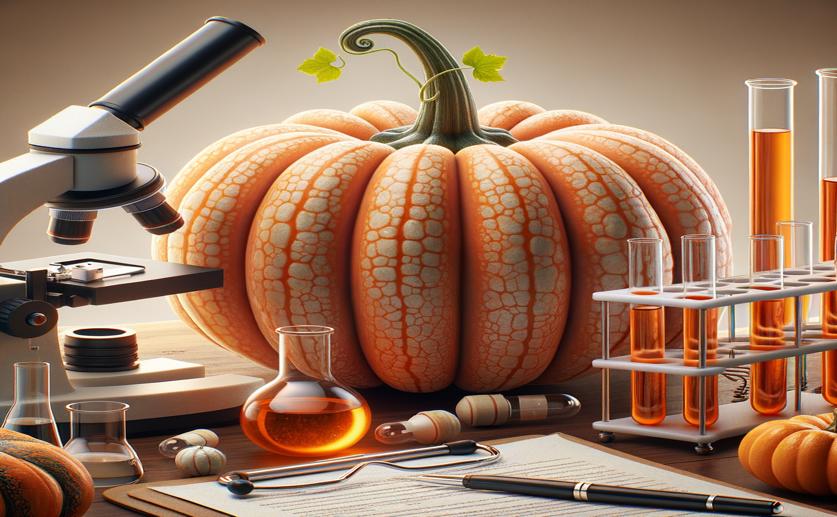
Pumpkin Fruit Compounds Could Help Manage Diabetes, New Study Finds
Greg Howard
16th August, 2024

Image Source: Natural Science News, 2024
Key Findings
- A study by Damanhur University, Egypt, analyzed the chemical composition of different parts of pumpkin (Cucurbita pepo) for their potential anti-diabetic effects
- Pumpkin extracts significantly inhibited carbohydrase enzymes and promoted glucose uptake by cells, which can help manage blood glucose levels
- Specific bioactive compounds in pumpkin, such as vaccenic acid and sinapic acid, were identified as contributors to its anti-diabetic potential
References
Main Study
1) Comprehensive metabolomics and chemometrics unravel potential anti-diabetic metabolites of pumpkin (Cucurbita pepo L.) fruits through UPLC-QqQ-MS and GC-MS analyses.
Published 15th August, 2024
https://doi.org/10.1016/j.foodres.2024.114771
Related Studies
2) Flavonoids and Their Anti-Diabetic Effects: Cellular Mechanisms and Effects to Improve Blood Sugar Levels.
3) Nutritional Value, Phytochemical Potential, and Therapeutic Benefits of Pumpkin (Cucurbita sp.).
4) Chemical composition and biological activity of ripe pumpkin fruits (Cucurbita pepo L.) cultivated in Egyptian habitats.
5) Peruvioses A to F, sucrose esters from the exudate of Physalis peruviana fruit as α-amylase inhibitors.



 4th July, 2024 | Jenn Hoskins
4th July, 2024 | Jenn Hoskins